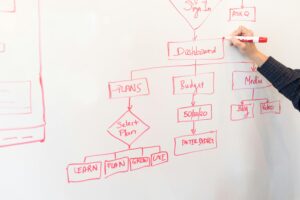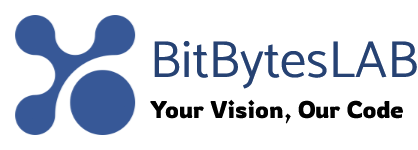Complete Introduction to Web Scraping with Python in 2025
Unlocking the Web’s Hidden Data: Your Gateway to Python Web Scraping
Imagine this: It’s 2025, and nearly half of all internet traffic isn’t human—it’s bots, tirelessly extracting valuable data from websites worldwide . [1] From price tracking for e-commerce giants to feeding AI models with training data, web scraping has become the silent engine powering today’s most innovative businesses. If you’ve ever wondered how companies gather competitive intelligence or how researchers collect vast datasets, you’re about to unlock their secret.

In this comprehensive guide, we’ll walk through everything you need to start scraping websites responsibly and effectively using Python. Whether you’re a data analyst seeking to automate collection, a marketer tracking competitors, or a developer building data-driven applications, you’ll find the foundational knowledge essential for success in today’s data-centric landscape.
The main contents of the article are as follows:
Introduction to web scraping: Defines web scraping and its applications, highlighting Python’s dominance with current statistics.
Legal and ethical considerations: Covers robots.txt, terms of service, and data protection regulations.
Technical foundations: Explains HTML structure, CSS selectors, and XPath with practical examples.
Website types: Differentiates between static and dynamic content and appropriate scraping tools.
Python scraping ecosystem: Introduces BeautifulSoup, Scrapy, Selenium, and Playwright with comparison tables.
Environment setup: Provides step-by-step guidance for creating virtual environments and installing libraries.
What Exactly is Web Scraping and Why Does Python Dominate?
At its core, web scraping is the automated process of extracting structured data from websites. Instead of manually copying and pasting information, we write programs that can systematically collect and organize web content at scale. [2] Common use cases include:
Price monitoring for competitive analysis in e-commerce
Lead generation from business directories and social media
Research data collection from academic journals and news sites
Real estate listings aggregation from multiple portals
SEO monitoring and search engine results tracking
When it comes to web scraping, one language clearly dominates the landscape. According to 2025 developer surveys, a staggering 69.6% of web scraping practitioners use Python for their data extraction projects . But why has Python become the go-to choice?
Python’s supremacy in web scraping stems from its gentle learning curve combined with its rich ecosystem of specialized libraries. Unlike many programming languages, Python reads almost like English, making it accessible to beginners while remaining powerful enough for enterprise-scale scraping operations. The language’s extensive collection of web scraping libraries means you can find the perfect tool for any scraping scenario, from simple blog sites to complex JavaScript-heavy web applications.
Legal and Ethical Web Scraping: Playing by the Rules
Before we write a single line of code, we must address the crucial legal and ethical dimensions of web scraping. Ignoring these considerations can lead to legal consequences, IP bans, or being permanently blocked from valuable data sources. [3]
Understanding robots.txt and Terms of Service
The robots.txt file is a website’s way of communicating its scraping preferences to automated bots. Located at https://website.com/robots.txt, this file specifies which sections of the site are off-limits to crawlers .
Common robots.txt directives include:
User-agent: * Disallow: /admin/ # Blocks access to admin area Disallow: /private/ # Blocks access to private data Crawl-delay: 10 # Adds 10-second delay between requests Allow: /public/ # Explicitly allows access
Respecting robots.txt isn’t just good practice—it’s the foundation of being a good digital citizen. As you embark on scraping projects, always:
Check the robots.txt file before scraping any website
Honor all Disallow directives—crawling restricted areas may violate terms of service
Follow crawl-delay instructions to avoid overwhelming servers
Review the website’s Terms of Service for specific scraping prohibitions
While robots.txt isn’t legally binding, violating it may have legal consequences under computer fraud laws or data protection regulations like GDPR .
Data Protection and Compliance Considerations
In today’s regulatory environment, how you handle scraped data is just as important as how you collect it. When scraping personally identifiable information (PII), several regulations may apply:
GDPR (General Data Protection Regulation) in the European Union
CCPA (California Consumer Privacy Act) in California
Various other regional and national data protection laws
As a general rule: When in doubt, don’t scrape it out. Avoid collecting personal information unless absolutely necessary, and always ensure you have a legitimate legal basis for processing such data.
The Building Blocks of Web Scraping: HTML, CSS Selectors, and XPath
To effectively extract data from websites, you need to understand how web pages are structured and how to navigate that structure.
HTML Structure: The Skeleton of Web Pages
At its heart, every web page is built using HTML (HyperText Markup Language), which organizes content into a hierarchical tree structure of elements. Here’s a simplified example:
""<html> <head> <title>Product Page</title> </head> <body> <div class="product-container"> <h1 id="product-title">Amazing Product</h1> <p class="price">$19.99</p> <div class="description"> <p>This product will change your life!</p> </div> </div> </body> </html>""
When you scrape a website, you’re essentially navigating this tree structure to find the specific elements containing your desired data.
CSS Selectors: Your Precision Targeting Tool
CSS selectors are patterns used to select elements based on their tag name, class, ID, or attributes. They’re one of the most common and intuitive ways to target specific elements when scraping .
| Selector Type | Example | Description |
|---|---|---|
| Tag selector | p | Selects all <p> elements |
| Class selector | .price | Selects elements with class="price" |
| ID selector | #product-title | Selects element with id="product-title" |
| Attribute selector | [data-role="title"] | Selects elements with specific attributes |
In practice, you might use BeautifulSoup with CSS selectors to extract product information:
# Find all product titles using CSS selectors titles = soup.select('.product-title') # Extract prices with specific class prices = soup.select('.current-price')
XPath: The Powerful Alternative for Complex Scraping
XPath (XML Path Language) is another query language specifically designed for navigating through elements and attributes in XML and HTML documents . While CSS selectors are often sufficient for simple projects, XPath shines when dealing with complex document structures.
Key XPath features include:
Bidirectional navigation (both parent-to-child and child-to-parent)
Advanced filtering based on element content, position, or complex conditions
Ability to select elements based on textual content
Here’s a comparison of common selection patterns:
| Selection Goal | CSS Selector | XPath Equivalent |
|---|---|---|
| All div elements | div | //div |
| Element with ID | #main | //*[@id="main"] |
| Element with class | .product | //*[@class="product"] |
| Third list item | li:nth-child(3) | //li[3] |
For most beginners, CSS selectors are easier to learn and use, but having XPath in your toolkit prepares you for more challenging scraping scenarios.
Static vs. Dynamic Websites: Choosing the Right Tools
Not all websites are created equal when it comes to scraping. Understanding the difference between static and dynamic content is crucial for selecting the appropriate tools and approaches.
Static Content: The Simpler Scraping Target
Static content is embedded directly in the HTML document returned by the server. When you view the page source (right-click → “View Page Source”), you can see all the content in the raw HTML .
Characteristics of static content:
Present in the initial HTML response
No JavaScript execution required to display content
Easily scraped with simple HTTP libraries
Common on SEO-optimized pages, blogs, and documentation sites
Recommended tools for static content: Requests + BeautifulSoup
Dynamic Content: The Modern Challenge
Dynamic content is loaded or modified after the initial page load, typically through JavaScript execution. This content won’t appear in the page source but is visible in your browser’s developer tools .
Characteristics of dynamic content:
Requires JavaScript execution to appear
Loaded via AJAX calls or client-side rendering
Common in modern web apps (React, Angular, Vue.js)
Requires browser automation tools to scrape
Recommended tools for dynamic content: Selenium, Playwright, Puppeteer

Hybrid Approaches for Modern Websites
Many modern websites use a hybrid approach, with some content static and other elements dynamic. As a scraper, you might use multiple techniques:
Start with static scraping for efficiency where possible
Use browser automation only for dynamic portions
Monitor network requests to potentially call APIs directly
The Python Web Scraping Ecosystem: Tools for Every Task
Python’s rich collection of web scraping libraries forms a complete toolkit for tackling any scraping project. Let’s explore the key players.
BeautifulSoup: The Beginner’s Best Friend
BeautifulSoup is arguably the most popular Python library for parsing HTML and XML documents. It creates a parse tree from HTML source code that makes it easy to extract, navigate, and modify data.
https://pypi.org/project/beautifulsoup4/ , https://www.crummy.com/software/BeautifulSoup/bs4/doc/
Strengths:
Gentle learning curve, perfect for beginners
Excellent documentation and community support
Flexible parsing with multiple backends (lxml, html.parser)
Integrates well with the requests library
Use cases: Static page scraping, simple extraction tasks, learning web scraping
from bs4 import BeautifulSoup import requests response = requests.get('https://example.com/products') soup = BeautifulSoup(response.content, 'html.parser') prices = soup.find_all('span', class_='price')
Scrapy: The Industrial-Strength Framework
Scrapy is a complete framework for building large-scale scraping projects, not just a parsing library. It handles requests asynchronously, making it significantly faster for scraping multiple pages.
Strengths:
Built-in support for concurrent scraping
Middleware pipeline for processing extracted data
Automatic handling of sitemaps and robots.txt
Production-ready with scaling capabilities
Use cases: Large-scale scraping projects, complex data pipelines, production systems
Selenium and Playwright: Browser Automation Powerhouses
When you need to scrape dynamic content, Selenium and Playwright are your go-to solutions. These tools automate real browsers, enabling them to execute JavaScript and interact with page elements just like a human user.
Selenium has been the industry standard for years, with support for multiple browsers and programming languages. Playwright is a newer Microsoft-developed tool gaining rapid adoption for its modern API and enhanced capabilities .
Strengths of browser automation tools:
Handle JavaScript-rendered content
Simulate user interactions (clicks, scrolls, form submissions)
Work with complex single-page applications (SPAs)
Can capture screenshots and performance metrics
Use cases: JavaScript-heavy websites, user interaction sequences, visual validation

| Library | Best For | Learning Curve | Performance | Dynamic Content |
|---|---|---|---|---|
| BeautifulSoup | Simple static sites | Easy | Moderate | No |
| Scrapy | Large-scale projects | Steep | High | Limited |
| Selenium | Dynamic content | Moderate | Lower | Yes |
| Playwright | Modern web apps | Moderate | High | Yes |
Setting Up Your Python Web Scraping Environment
Now that we understand the landscape, let’s set up a proper Python environment for web scraping. Using virtual environments is crucial for managing dependencies and avoiding conflicts between projects.
Creating and Activating Virtual Environments
A virtual environment is an isolated Python installation that allows you to manage packages separately for different projects . Here’s how to set one up:
# Create a virtual environment named 'scraping-env' python -m venv scraping-env # Activate the environment (Windows) scraping-env\Scripts\activate # Activate the environment (macOS/Linux) source scraping-env/bin/activate
Once activated, your command prompt should show the environment name, indicating you’re working within the isolated environment.
Installing Essential Scraping Libraries
With your virtual environment active, install the core web scraping libraries:
# Install essential scraping packages pip install requests beautifulsoup4 selenium playwright scrapy lxml # Install browser automation tools playwright install
Let’s break down what each package does:
requests: Simplifies making HTTP requests to fetch web pages
beautifulsoup4: Parses HTML and provides easy extraction methods
selenium: Automates web browsers for dynamic content
playwright: Modern browser automation for Chromium, Firefox and WebKit
scrapy: Full-featured scraping framework for large projects
lxml: Fast HTML parser that serves as a BeautifulSoup backend
Verifying Your Installation
Confirm that everything is working correctly with a simple test script:
import requests from bs4 import BeautifulSoup # Simple test to verify installation response = requests.get('http://example.com') soup = BeautifulSoup(response.content, 'html.parser') title = soup.find('title').text print(f"Page title: {title}") print("Environment setup successful!")
Your Web Scraping Journey Begins Here
You now have a solid foundation in web scraping fundamentals and a properly configured Python environment. We’ve covered why Python dominates the scraping landscape with a 69.6% adoption rate , how to approach scraping ethically and legally, the technical foundations of HTML parsing, and the essential tools for both static and dynamic content.
In our next article, we’ll dive into hands-on scraping with BeautifulSoup, where you’ll build your first robust web scraper and learn practical techniques for extracting real-world data.
In the meantime, I’d love to hear about your scraping goals! What data sources are you most interested in exploring? Share your thoughts in the comments below.
Deep Dive Resources
For those eager to continue learning, here are valuable resources from our research:





